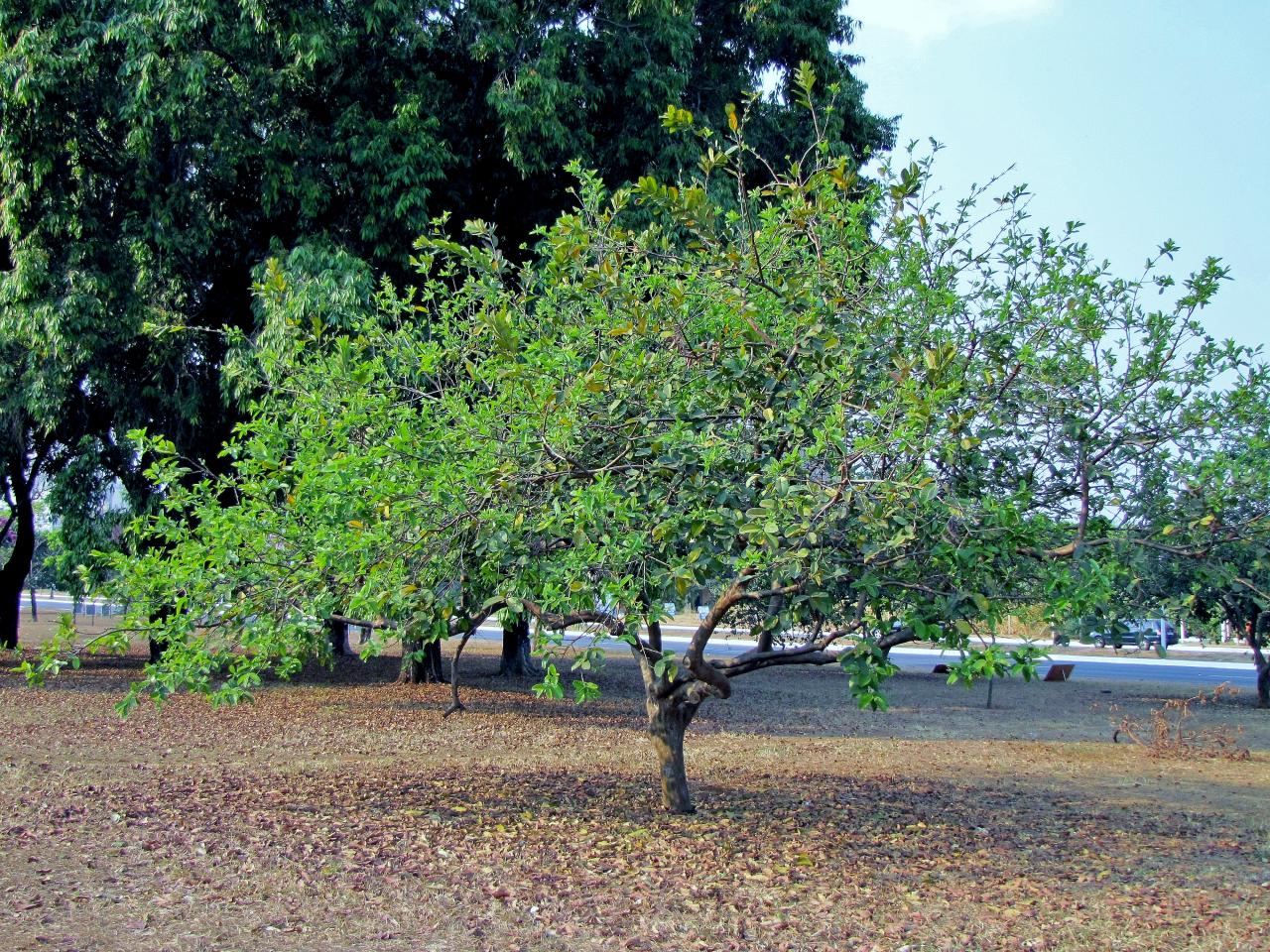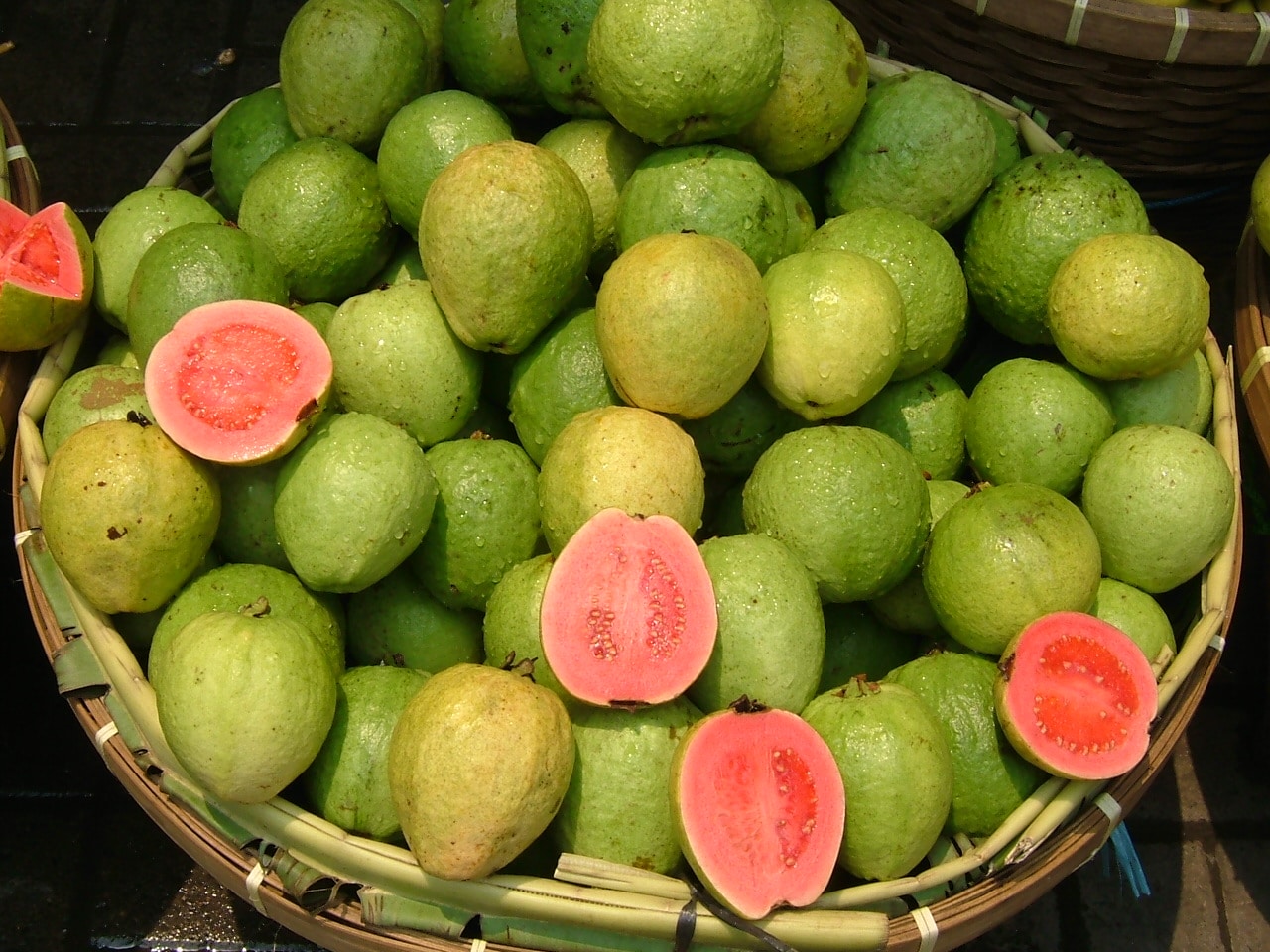
La guava or guava is a tropical tree that can be had both in the garden and in a pot. It does not usually grow very large, and even then it can be pruned in late winter to control its growth and development, so it looks great anywhere 😉.
It is not very demanding, although like any plant worth its salt, it has its own preferences in terms of the conditions to live well.
Origin and characteristics of guava
The guava is a tropical evergreen plant native to the rainforests of America belonging to the genus Psidium. They can reach heights of about 5 to 10 meters, with a rounded crown with opposite leaves, simple, and elliptical to oval of 5 to 15 centimeters. They produce white flowers, composed of five petals and a large number of stamens.
The fruit is edible, and acquires a rounded or pear shape. It measures between 3 and 10 centimeters in diameter, and its skin is pale green to yellow, or pink to red depending on the species. The pulp is white or orange, creamy and with many hard seeds.
Main species
The best known are:
Psidium guava

Image - Flickr / Mauricio Mercadante
It is a tree or shrub that grows between 2,5 and 10 meters native to tropical America. The leaves are simple, bright green to brownish green, and give off a very pleasant aroma. It produces white flowers, and semi-spherical, ovoid or pear-shaped fruits of a pinkish green, green, or yellowish cream color up to 8 centimeters in diameter.
Not cattleianum

Image - Flickr / Candise Sorensen
It is known as Peruvian guava, red arazá, guayabita del Petú or güisaro, it is native to South America, especially Peru. It does not usually exceed 3 meters in height, but can sometimes grow into a tree of up to 10 meters. Its leaves are elliptical, and its flowers are white. It produces globose fruits, red or sometimes yellow.
It is included in the list of the 100 most harmful invasive alien species in the world by the International Union for Conservation of Nature.
What is the care of guava?

If you want to have a copy, we recommend that you provide it with the following care:
Location
They are plants that They must be outside as long as the weather is good, in full sun. But if you live in an area with strong sunshine (such as the Mediterranean for example) it is more interesting to put it in semi-shade, or in an area where the sun would shine early in the morning or late in the afternoon.
Earth
It grows in all types of soilsAlthough if it is grown in the garden, its fruits will taste better if the soil is deep and rich in organic matter, with a pH between 5 and 7. On the other hand, if it is kept in a pot, it is advisable to use a porous substrate. and that it has compost, for example: 60% black peat + 30% perlite + 10% guano or worm castings.
Irrigation
These plants they need more or less frequent waterings, especially during the summer. They do not resist drought, so they should be watered an average of 3-4 times a week during the hottest and driest season of the year, and somewhat less the rest of the seasons.
It is important to avoid waterlogging, so it should not be put in pots without holes or in soils with a tendency to compact, otherwise the roots will rot.
Subscriber
From early spring to late summer It has to be paid with organic products: guano, compost, mulch. The frequency will vary depending on what you use, but in principle it will be once every 15-20 days.
Multiplication
Guava or guava multiplies by seeds in spring. For this, it is advisable to sow them in seedling trays or in pots, putting no more than 2 in each socket or container, and burying them a little so that they are not exposed.
Placing the seedbed outside, in semi-shade, they will germinate in about 10 days.
Pruning
You can remove dry, diseased, weak or broken branches in spring with previously disinfected pruning tools.
Rusticity
It must be taken into account that, due to its origin, it does not resist cold nor, therefore, frost, although it does withstand high temperatures and can be kept inside a room where a lot of natural light enters if you live in an area where winter is cold.
What uses is given to the guava tree?

Image - Wikimedia / Sakurai Midori
It has several:
Ornamental
For its size, it is especially suitable for small gardens, even for large patios, planted both in the ground and in a large pot.
Culinary
Its fruits are edible, being consumed raw, either cut into slices or as if it were an apple. If boiled, it is ideal for making sweets, jellies, juices, and jams.
Medicinal
Guava is one of the most complete fruits: it has about 4 times more vitamin C than orange, which makes it especially suitable for treat the flu. Both its leaves and the bark of its trunk are astringentes, and also the root, as well as its bark, They can be used to treat anemia and weakness.
Where to buy?
You can buy seeds from here:
No products found.
What did you think of the guava?
Hello!! I would like to know if the guava tree has invasive roots.
There is also a variety of large guava, in my country we call it guava of the month, how is that tree in terms of its size, and roots.
Thank you very much
Hello Karla.
They are not very invasive, but they do need room to grow.
Regarding the guava of the month, I don't know what it is.
A greeting.
Hello, how can I protect the fruits of the guava, since when they ripen they have worms inside, or they fall off sooner.
Hi Lorena.
I recommend you treat them with Bacillus thuringiensis, which is a natural insecticide that you will find in nurseries and in online stores (also in amazon).
A greeting.
Hello, how do I prevent the cottony mealybug that hurts or hurts the plant so much.
Hi Ricardo.
You have the information you are looking for here.
A greeting.
Hello, I have a guava tree that was very nice when it was in the pot, but after planting it, the plant does not show growth and several leaves dry up, preserving their green color, what could be the cause? Thanks a lot
Hello Maykel.
When it was time to take it out of the pot to plant it in the ground, did the earth bread crumble? Is that if so, it will take longer to recover.
It would be highly recommended to water it with rooting hormones, or with homemade rooting agents, so that it gets rooted.
Regards!